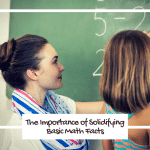[fusion_builder_container hundred_percent=”yes” overflow=”visible”][fusion_builder_row][fusion_builder_column type=”1_1″ background_position=”left top” background_color=”” border_size=”” border_color=”” border_style=”solid” spacing=”yes” background_image=”” background_repeat=”no-repeat” padding=”” margin_top=”0px” margin_bottom=”0px” class=”” id=”” animation_type=”” animation_speed=”0.3″ animation_direction=”left” hide_on_mobile=”no” center_content=”no” min_height=”none”]
I love math! I find fascination in numbers and how they work together. But, I also remember being confused in math classes, especially in upper level math. Often the procedures for solving did not make sense to me. I would memorize the method, but not understand the process. I found sometimes I could “discover” the answer and then work backwards to show the work. I was happy to have the “work”, but wanted to understand what I loved. That understanding did not always come. Today, thankfully, math is different.
For the past month we have focused on adding and subtracting multi-digit numbers in fourth grade. Using a conceptual program, we take students from base-10 representation through standard computation. It looks very different from how I learned math. This new method often confuses parents. They don’t understand the processes as we work through place value understanding. I remember seeing the processes for the first time a few years ago and feeling the same confusion. But as I have taught this strategy to a range of abilities, it works. Students have a stronger understanding of place value and therefore, in the end, compute with more accuracy and fluency. Many of my students are able to use mental math for multi-digit problems at the end of our unit. It is exciting to see the mastery of computation.
So, how does it start? This conceptual approach to computation starts with manipulatives. Students must see the numbers and to allow them to do that we handle the numbers. Base-10 blocks show what numbers represent. Most fourth graders can do this with pictorial representation. Some, however, need to get the blocks out or use virtual blocks. Most use base-10 short hand to draw computation problems and watch those digits trade places. Tens are broken or regrouped to make ones or hundreds. Hundreds become tens or thousands. When we hit ten-thousand the inevitable “Oh!” is seen as that breaks apart into groups of thousands, not hundreds. When students see the place value, they are ready to move on to the next step.
When most of your students do not need to rely on the drawing, it is time to move on to expanded form. This process enables students to see the place value in a digital representation. Students expand the numbers and add/subtract within the place value. At the end they add their totals to find the answer. For example, 6,135 + 2,798 becomes
6,000 100 30 5
+ 2000 700 80 9 The students add each place value set of numbers.
8,000 900 110 14 This step shows the addition. Then they add the sums to find the total of 9,024.
Practice with expanded form allows students to explore regrouping and borrowing, allowing them to see the pace value of each digit. It helps them understand and use the language of regrouping and borrowing in hundreds and thousands, versus “carry the 1”. This will make connections for them to self-correct and catch their own errors later.
The next process is my favorite. Students use a combination of expanded form and standard computation. They use the traditional equation, but show their work underneath. As you add or subtract you replace each digit with a “0” once it has been used to show the work has been computed. Finally add the sums to find the total.
6,135
+ 2,789
14
110
900
8000
9,024
Use of this method allows students to think about their work in place value terms. You don’t carry the 1, you add 100. Thinking in place value allows students to catch mistakes they make when they move to standard computation.
Change is often hard. Parents want to help their children with homework, but when they are being told by their child they are doing it “wrong” it causes stress on both parties. Using conceptual math will help students calculate accurately and efficiently, but you must also communicate with parents how things work. Learning is a life-long process. Don’t be afraid to try something new and learn with your kids. Check out the video links that show examples of the processes. Try some problems of your own. I know I have learned so much about math using the conceptual model. Wish I would have had this when I went through school.[/fusion_builder_column][/fusion_builder_row][/fusion_builder_container]





Leave a comment